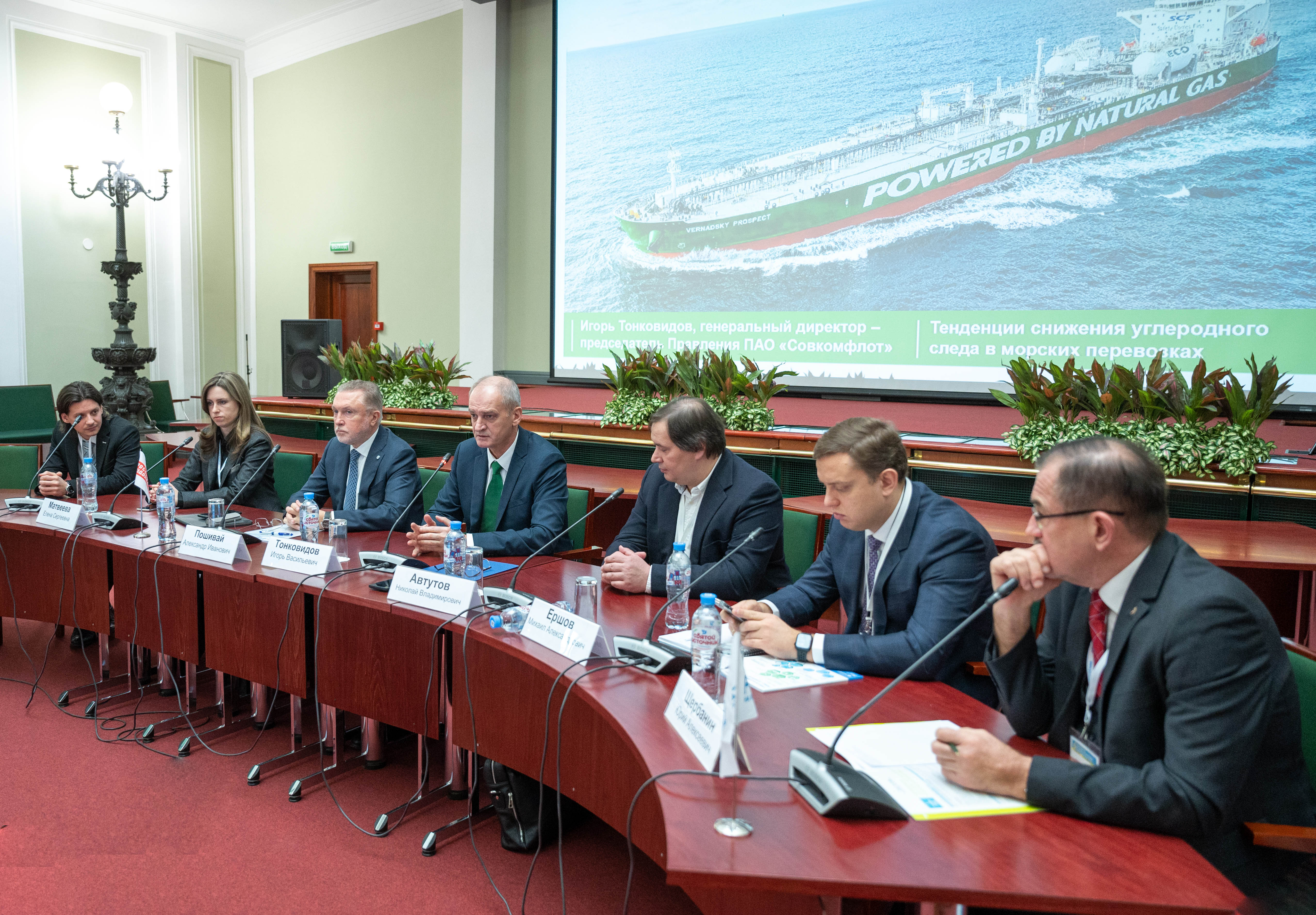
Despite the dramatic events in the gas sector, liquefied natural gas (LNG) is still the most promising type of marine fuel on the mid-term horizon. That was the conclusion of the key market players and experts who met at the 6th LNG Fleet, LNG Bunkering and Alternatives conference.
With high global gas prices, it would seem the interest of ship owners to gas-powered ships should be cooled. Nevertheless, the number of ships running on LNG is growing worldwide and the related bunkering infrastructure is developing.
According to open data, LNG-powered fleet has increased by 42% this year to 322 ships. The number of ships under construction has grown by a quarter to 512 units, the number of LNG bunkering ships – by 22% to 39 units with 19 more under construction.
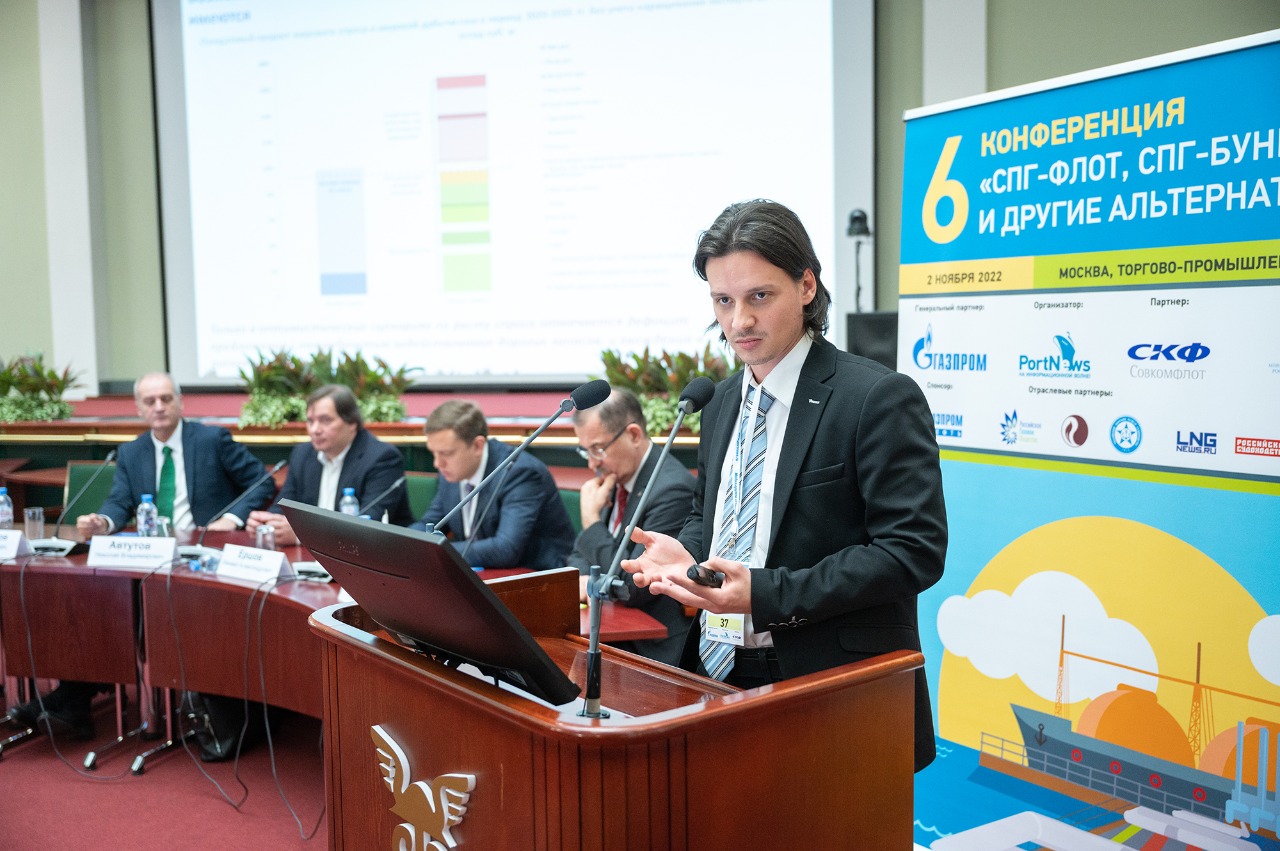
The ship owners’ optimism is clear: four-digit prices for gas cannot remain forever. As Dmitry Grushevenko, expert of the Energy Research Institute of the Russian Academy of Sciences (ERI RAS), said at the 6th LNG Fleet, LNG Bunkering and Alternatives Conference held by PortNews Media Group in Moscow (the Conference), global LNG prices will fall to $300-$400 per 1,000 cbm within a five-year period if the geopolitical situation normalizes.
“LNG production facilities were excessive in 2020-2021 and now they are 100% loaded only due to the problems with supplies of Russian pipeline gas. As new projects enter the market, the excess will only grow, вАТ said the expert. вАТ In the current price situation, LNG is even a more costly alternative than oil products. But we cannot expect gas prices to remain as high as they are today on the horizon of 5вАТ10 years. None of the countries that have announced the development of LNG bunkering is to reject its plans. It cannot be excluded that not only sulphur but also CO2 emissions from ships are covered by restrictions in the future, which is to increase the attractiveness of LNG as a marine fuel."
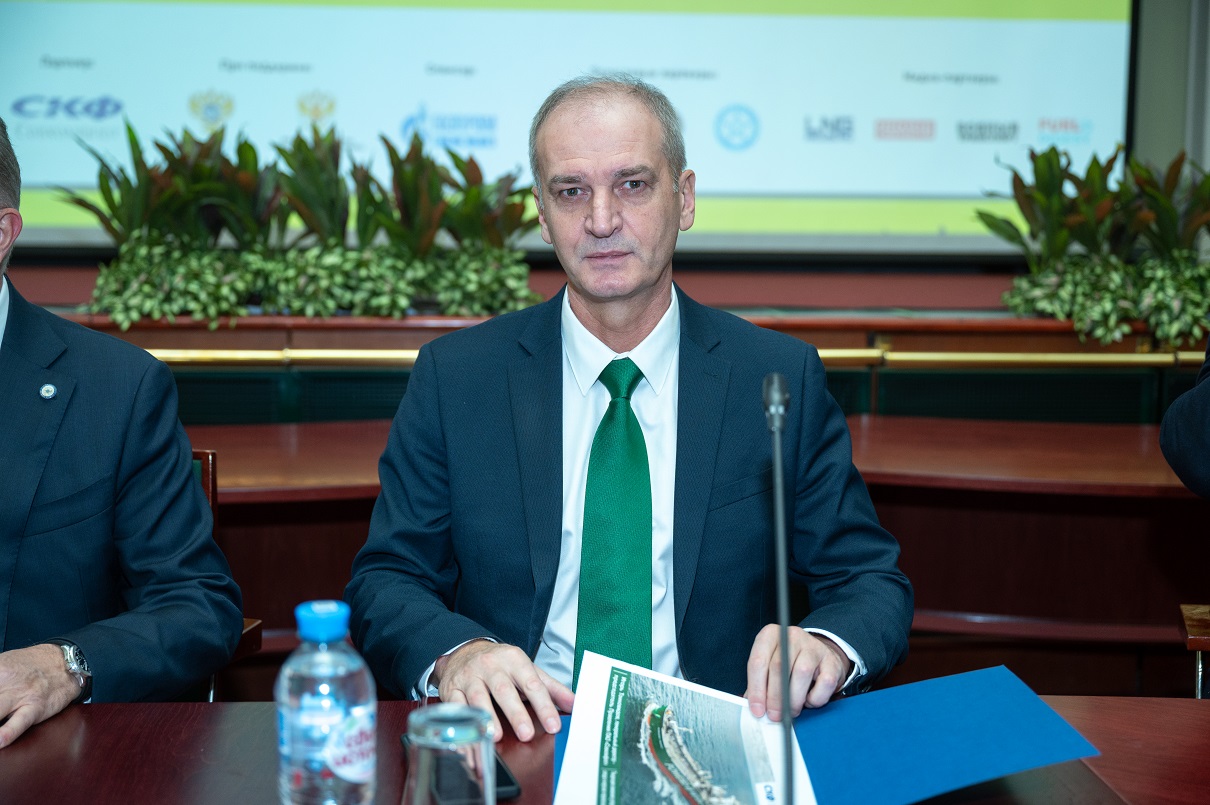
In Russia, the driver of LNG-powered shipping is Sovcomflot. When speaking at the Conference, Igor Tonkovidov, President and CEO of Sovcomflot, emphasized that despite drastic changes in the global energy market in 2021-2022, the need to consistently reduce emissions from ships in compliance with MARPOL requirements is still among the key factors of planning the current and the future economy of shipping for both ship owners and cargo owners. Although the shipping industry has been actively exploring the option of alternative fuels, LNG is still an optimal solution to meet the goal set by IMO for 2030 due to a combination of several factors including calorific value, emissions per unit of energy produced, availability of fuel and related technologies in the market.
“In spite of the energy crisis, technical progress is still on. Keeping pace with it or leading it is preferable, which I believe as a head of Sovcomflot and as an engineer. We will not give up this work, we will continue moving forward,” said Igor Tonkovidov.
According to Sovcomflot’s calculations based on operational data of its ‘Green Funnel’ tankers (2018вАТ2021), using of liquefied natural gas (LNG) as a marine fuel will ensure compliance of those ships with IMO requirements up to 2032вАТ2039 (depending on operation mode).
“In 2024, two tankers of Sovcomflot’s ‘Green Funnel’ series will be deployed for the Sakhalin-2 project under a time charter from 2024 for 10 years. If both ships use only LNG as a fuel as it is planned, that will let reduce CO2 emissions by about 53 thousand tonnes over 10 years, or by 29%, as compared with using conventional Aframax shuttle tankers for transportation of the same volumes on the same routes,” he said.
The head of Sovcomflot also told about the first operation on bunkering of a sea-going ship with gas fuel conducted in September 2022. The operation on bunkering of the Korolev Prospect ship of the 'Green Funnel' series from the Dmitry Mendeleev ship was performed in the port of Ust-Luga (Leningrad Region). In September 2021, PAO Sovcomflot and PAO Gazprom Neft signed an agreement to develop innovative technologies and use low-carbon fuels in maritime transport.
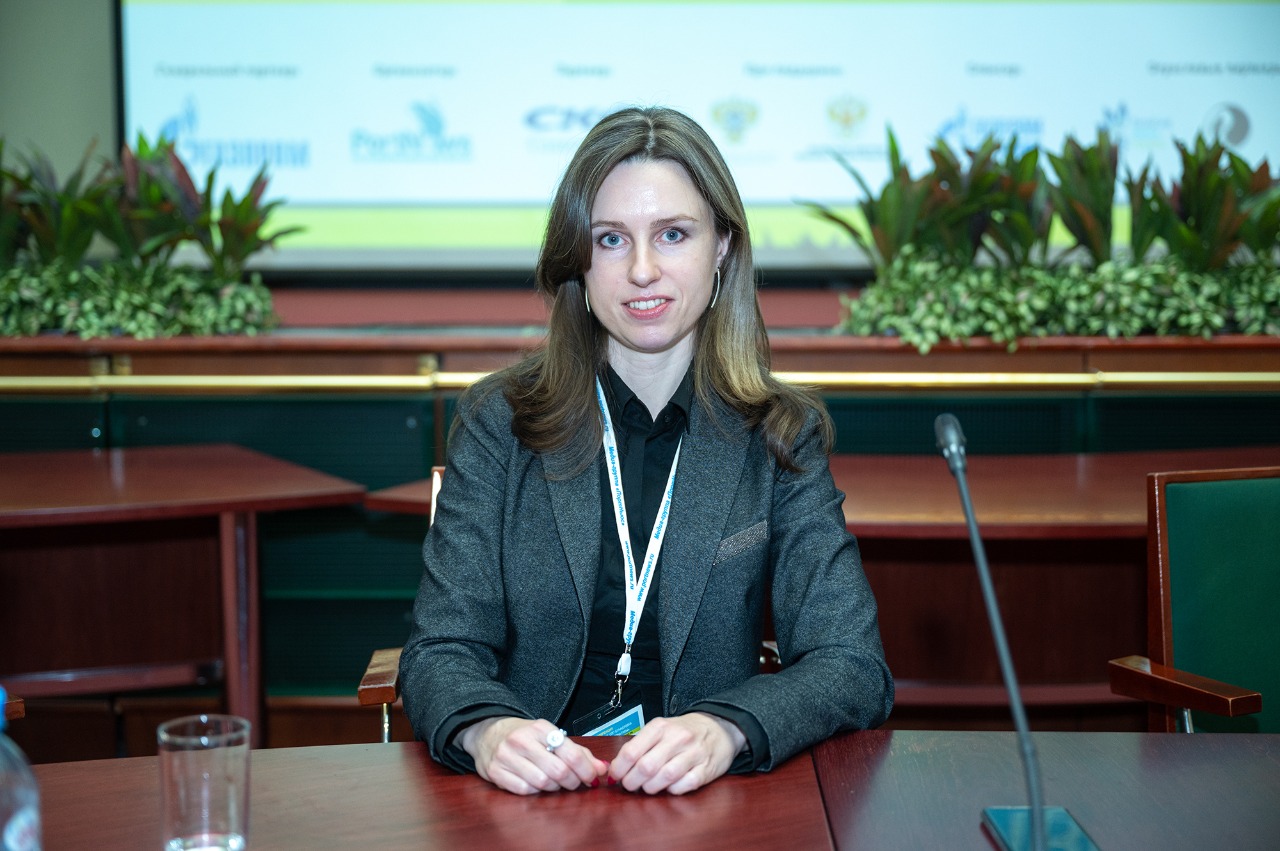
Elena Matveyeva, head of the Strategic Planning Department at Gazpromneft Marine Bunker, told the Conference participants about the LNG bunkering ship Dmitry Mendeleev. According to the speaker, the ship currently operates in the Baltic region where all the conditions have been created for successful supply of ships with LNG: port dues discounts are offered, 2 LNG plants are in operation in the region, LNG is of high quality with its methane number exceeding 90. Ship owners purchasing LNG enjoy a saving as compared with using diesel fuel.
Meanwhile, Elena Matveyeva says, the market suffers a negative impact of foreign consumers’ withdrawal and limited access to western technologies in the part of construction, start-up and servicing of vessels. The industry experts say it is necessary to simplify the procedure of customs clearance when it comes to LNG bunkering. There should be a possibility to have LNG bunkering approved at the berths of seaports.

While on this topic, it should be noted that bunkering ship Dmitry Mendeleev will fuel new dual-fuel ferries Marshall Rokossovsky and General Chernyakhovsky ferries operating on the strategic line linking the Kaliningrad Region with the mainland of Russia. According to Sergey Korovin, Head of Fleet Development and Construction, FSUE Rosmorport, the ferries will be fueled with LNG every 9-10 days with the bunkering operations to be conducted in the port of Ust-Luga. According to the speaker, a ferry can make two round voyages on Ust-Luga-Baltiysk line between the bunkering operations.
Ferries of Project CNF19M have two cryogenic tanks of 300 cbm each. They can be bunkered from tank trucks, from bunkering ships or from a shore-based bunkering facility.
When it comes to alternative fuels, nuclear power should be mentioned since Russia has a unique nuclear-powered fleet of civil ships. Under construction is a series of 60MW nuclear-powered icebreakers of Project 22220. According to Konstantin Stasyuk, Deputy Director of Department for Implementation of NSR Projects - Head of Infrastructure Development Department, Rosatom, the flag-hoisting ceremony on the third ship of the series, the Ural, is to be held before the end of November 2022.
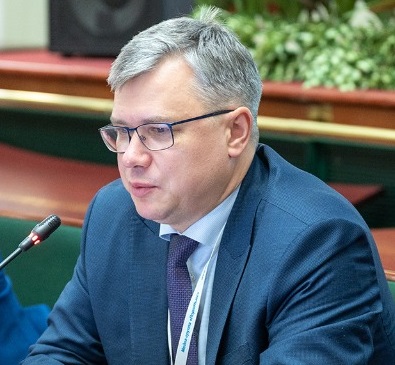
Meanwhile, it is very-low sulphur fuel oil (VLSFO) that governs in general today and Russia has something to offer. The quality of domestically-produced VLSFO is superior to the worldwide average. As Mikhail Yershov, associate professor at the National University of Oil and Gas named after I.M.Gubkin (Gubkin University), said at the Conference, fuel offered in Russian ports is ligher in terms of their viscosity/density characteristics – average viscosity is 30-40 cSt.
The key component of the mix is hydroprocessed vacuum gasoil since there are no facilities for upgrading of residual fractions in the Russian Federation. Apart from vacuum gasoil, the mix also includes low sulphur straight run, diesel oil fractions and cracked gasoil (mostly light).
Besides, fuel offered in Russian ports features lower average sulphur content – 30% of compositions can contain less than 0.46% of sulphur (average global content - 10%).
When speaking about alternative fuels, the expert emphasized that all of them have certain disadvantages. LNG is most criticized for its carbon level which is not low enough, for the risk of methane leaks and for a potential hindering of development of less carbon-intensive alternatives.
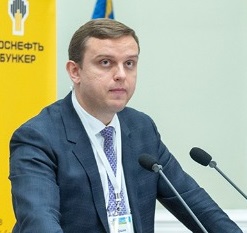
Among the disadvantages of methanol is its low viscosity, volumetric energy density, low flammability and high toxicity. However, compatibility with the infrastructure, a long period of storage and an opportunity to achieve 100-pct reduction of emissions contribute to the prospects of methanol.
Factors restricting application of biofuel are its high price per unit of energy, limited availability of raw materials, lack of industrial technologies for upgrading. However, a combination of factors (raw materials, quality and production cost) makes the production of marine fuel components through processing of lignocellulosic and other residue the most promising activity. Gubkin University is currently developing a marine biofuel and a technology for its production.
Extremely high toxicity is the key disadvantage of ammonia which is especially hazardous for aquatic wildlife as it is unlimitedly soluble in water. Another disadvantage is enormous NOx emissions during combustion. Besides, the problem of using ammonia for 4-stroke engines has not been solved yet – so far it is applicable only for two-stroke power units.
As for hydrogen, its prospects are still vague. ”Russia should be extremely cautious about investments and state subsidizing of the hydrogen energetics. There is a possibility that the hydrogen energetics which is being highly discussed today will remain one of the instruments of the economy decarbonization without a global demand... We should bet on LNG, the more so as Russia has great opportunities in this respect, especially when the supplies to external market are going down,” said Dmitry Grushevenko.
So, Russian ship owners, bunker suppliers and experts adhere to a realistic approach to the segment of alternative fuels with the focus on development of something that has been thoroughly studied and that has the best visible prospects. Among them are VLSFO, LNG and nuclear energy. As for methanol, ammonia, hydrogen and biofuel, they are either niche products applied by foreign ship owners with the state support or poorly developed for mass commercial application.
More industry-related content is available on our social media pages: YouTube, Telegram, Yandex Zen




